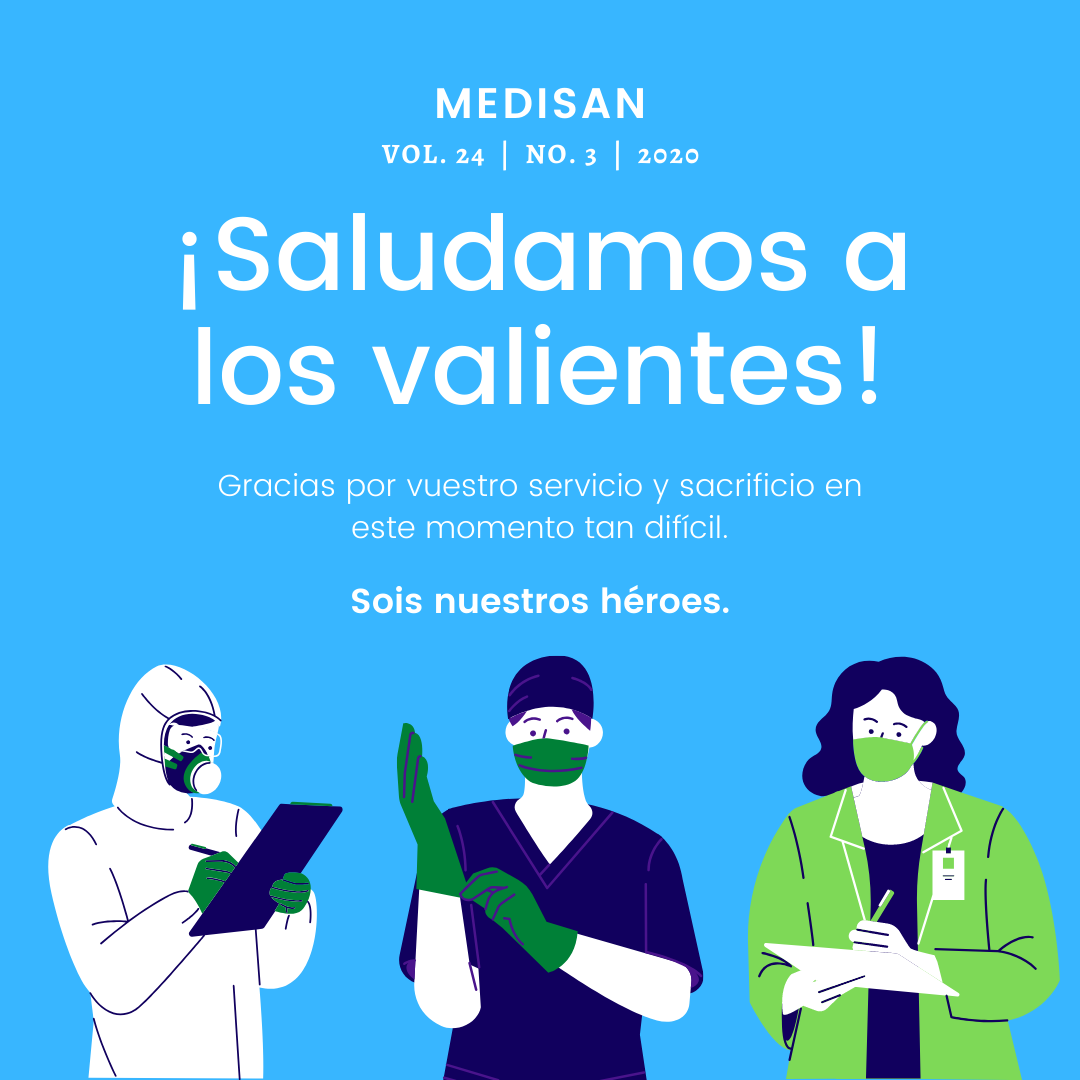Bronchoscopic and histologic aspects in patients with lung cancer
Keywords:
lung cancer, squamous cell carcinoma, adenocarcinoma, bronchoscopic findings, fibrobronchoscopy.Abstract
Introduction: It is denominated as lung cancer to a group of diseases resulting from the abnormal growth of cells of the breathing tract, in particular of the lung tissue.
Objective: To determine the useful bronchoscopic and histologic aspects in the confirmation of the diagnosis of these neoplasms.
Methods: A descriptive and cross-sectional investigation of the 346 patients assisted due to lung cancer in the Pulmonology Service of Dr. Juan Bruno Zayas Alfonso Teaching General Hospital was carried out in Santiago de Cuba during 2016 and 2017 to whom a bronchoscopy was carried out. The variables used were age, sex, diagnostic technique used, histopatologic diagnosis and more frequent localization.
Results: The patients aged 56 and 75 (66.1 %), as well as the male sex (65.0 %) prevailed. The bronchial biopsy was the procedure that mostly revealed the presence of cancer (61.3 %) and the most frequent histologic type was the squamous cell carcinoma (67.8 %).
Conclusions: The importance of bronchoscopy and its diagnostic procedures to confirm the existence of the morbid process was demonstrated.
Downloads
References
2. Puente J, de Velasco G. ¿Qué es el cáncer y cómo se desarrolla? Madrid: SEOM; 2019 [citado 07/04/2019]. Disponible en: https://seom.org/informacion-sobre-el-cancer/que-es-el-cancer-y-como-se-desarrolla
3. Cáncer de pulmón. Enciclopedia Medlineplus [citado 03/06/2019]. Disponible en: https://www.nlm.nih.gov/medlineplus/spanish/lungcancer.html
4. Acosta SC. Cáncer de Pulmón. En: Noya Chaveco ME, Moya González NL, Llamos Sierra N, Morales Larramendi R, Cardona Garbey NL, Filiú Herrera JL, et al. Roca Goderich. Temas de Medicina Interna. T 1. 5 ed. La Habana: Editorial Ciencias Médicas; 2017. p. 250-64.
5. World Health Organization. Health statistics and information systems. Disease burden and mortality estimates. Geneva: WHO; 2018 [citado 13/04/2019]. https://www.who.int/healthinfo/global_burden_disease/estimates/en/
6. Acosta Reynoso IM, Remón Rodríguez L, Segura Peña R, Ramírez Ramírez G, Carralero Rivas A. Factores de riesgo en el cáncer de pulmón. CCM. 2016 [citado 19/04/2019]; 20(1). Disponible en: http://scielo.sld.cu/scielo.php?script=sci_arttext&pid=S1560-43812016000100005
7. Cuba. Ministerio de Salud Pública. Dirección de Registros Médicos y Estadísticas de Salud. Anuario Estadístico de Salud. 2017. La Habana: MINSAP; 2018 [citado 18/05/2019]. Disponible en: https://files.sld.cu/dne/files/2018/04/Anuario-Electronico-Espa%c3%b1ol-2017-ed-2018.pdf
8. Cuba. Ministerio de Salud Pública. Anuario Estadístico de Salud. 2015. Dirección Nacional de Estadísticas. República de Cuba. La Habana: MINSAP; 2016 [citado 01/05/2019]. Disponible en: https://files.sld.cu/dne/files/2016/04/Anuario_2015_electronico-1.pdf
9. Reyes N, Luque E, Santos J, Alfageme I. Broncoscopia Diagnóstica. Requisitos sedación y técnica. En: Soto Campos JG. Manual de diagnóstico y terapéutica en neumología. 3 ed. Madrid: Ergón; 2016. p. 125-35.
10. Herth F, Beamis J, Ernst A. History of Rigid Bronchoscopy. En: Beamis JF, Mathur P, Mehta AC. Interventional Pulmonary Medicine. Vol. 189. Boca Ratón: CRC Press; 2016. p. 1-12.
11. Díaz –Agero Álvarez P, Flandes Aldeyturriaga J. Broncoscopia diagnóstica y terapéutica. Vol. 10. Madrid: Ergón; 2007 [citado 01/05/2019]. (Monografías NEUMOMADRID) Disponible en: https://www.neumomadrid.org/wp-content/uploads/monog_neumomadrid_x.pdf
12. Pacheco Gutiérrez I, López Vergara JM, Ríos Hidalgo N, Hernández Torres T, Martínez Ramos L, Figueredo Correa M. Diagnóstico citológico pulmonar en lesiones estudiadas por broncoscopia. Hospital Clínico Quirúrgico Docente Miguel Enrique. 2011-2015. Panorama Cuba y Salud. 2017 [citado 17/03/2018];12(3). Disponible en: http://www.revpanorama.sld.cu/index.php/panorama/article/view/678/pdf_124
13. Savón Plutín R, Seisdedos Romero N, Fernández Moreno A, Fernández Moreno J. Perfil diagnóstico de cáncer de pulmón no pequeño celular. Rev Inf Cient. 2015 [citado 17/04/2019];93(5):1154-62. Disponible en: https://www.redalyc.org/pdf/5517/551757222014.pdf
14. Pino Alfonso PP, Viteri Romero LE, Rodríguez Vázquez JC, Sollet Soto E, Vega Rodríguez I, Gassiot Nuño C, et al. Citología aspirativa con aguja fina transbroncoscópica en lesiones endobronquiales. Rev Cubana Med. 2016 [citado 17/04/2019];55(4). Disponible en: http://scielo.sld.cu/scielo.php?script=sci_arttext&pid=S0034-75232016000400002
15. Álvarez Síntes R. Afecciones respiratorias. Báster Moro JC, Hernández Cabrera G, García Núñez RD. Medicina General Integral. 3 ed. La Habana: Editorial Ciencias Médicas; 2014. p. 1051-112.
16. Pino Alfonso PP, Viteri Romero L E, Rodríguez Vázquez J C, Sollet Soto E, Vega Rodríguez Il, Gassiot Nuño C et al. Citología aspirativa con aguja fina transbroncoscópica en lesiones endobronquiales. Rev Cubana Med. 2016 [citado 17/04/2019];55(4). Disponible en: http://scielo.sld.cu/scielo.php?script=sci_arttext&pid=S0034-75232016000400002
17. García Quero C, García Luján R, González Torralba F, de Miguel Poch E, Alfaro Abreu J, Villena Garrido V, et al. Rentabilidad de la broncoscopia en el diagnóstico de lesiones pulmonares focales malignas. Rev Clin Esp. 2017; 208(11):551-6.
18. Vargas Gutiérrez S, Ruiz Jorge L. Valor diagnóstico de la citología del lavado y el cepillado bronquial en el cáncer de pulmón. Rev Acta Med Cent. 2018 [citado 08/06/2019];12(1). Disponible en: https://www.medigraphic.com/pdfs/medicadelcentro/mec-2018/mec181a.pdf
19. Cabo García A, del Campo Mulet E, Rubio González T, Nápoles Smith N, Columbie Reguifero JC. Aspectos clínicos y epidemiológicos en pacientes con cáncer de pulmón en un servicio de neumología. MEDISAN. 2018 [citado 09/06/2019];22(4):394-405. Disponible en: http://scielo.sld.cu/scielo.php?script=sci_arttext&pid=S1029-30192018000400009&lng=es
Published
How to Cite
Issue
Section
License
All the articles can be downloaded or read for free. The journal does not charge any amount of money to the authors for the reception, edition or the publication of the articles, making the whole process completely free. Medisan has no embargo period and it is published under the license of Creative Commons, International Non Commercial Recognition 4.0, which authorizes the copy, reproduction and the total or partial distribution of the articles in any format or platform, with the conditions of citing the source of information and not to be used for profitable purposes.





